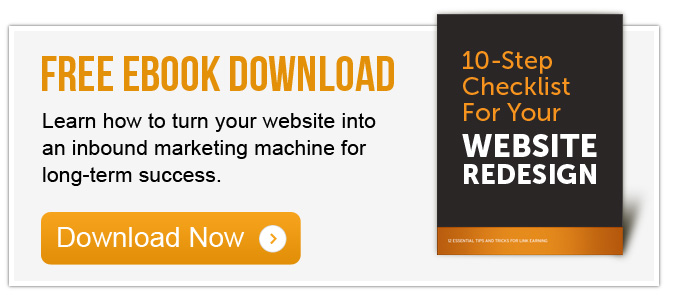 In part one of our must-have elements for an effective website, I focused on content. In part two, I’ll touch how we’ve come a long way from old school website design; although, some elements of modern sites give a nod to features from back in the day in regard to simplicity. While a lot of creative inspiration and functionality factors go in to good design, here are some current trends that have broad acceptance and appeal.
In part one of our must-have elements for an effective website, I focused on content. In part two, I’ll touch how we’ve come a long way from old school website design; although, some elements of modern sites give a nod to features from back in the day in regard to simplicity. While a lot of creative inspiration and functionality factors go in to good design, here are some current trends that have broad acceptance and appeal.
1. Bold Typography:
The hottest typography for the web right now can be summed up with two words that might seem mutually exclusive - simple and dramatic. With more and more fonts available for free use, (and the ability of modern browsers to render them all) it may be tempting to go crazy, but sans-serif fonts used in large sizes, often in white, are a popular choice.
2. Hero images:
Don’t know what a hero image is? It’s likely you have seen this trend in action on many of your favorite websites, even if you did not know what it is called. The first visual element that you see on a website, usually a full-width combination of a photo and text, is a hero image. It sets the tone for the overall site content and aesthetics.
Single page websites with large, full-width headers that are typically based on a photo are what the hero images style is all about. The photos are descriptive, relatable, and create an interest in the content on the site. These sites are easy to navigate and not overloaded with information - the large photos help to tell the story.
3. Valuable Videos:
If you want content that is engaging, informative, and even emotional, videos are a great choice. Videos are used for explaining complex products or procedures, and any topic with a sensitive component, such as customer testimonials or recruiting employees.
Beyond illustrating your offerings and lowering your bounce rate, videos can also provide valuable data on your site visitors. The action of watching a video is a good way to score leads, in order to effectively target your sales team’s time. Don’t forget to provide a transcription and allow others to embed your videos to get even more results from this important piece of content.
4. Large product images:
More and more people are buying what they need and want online each year - even the venerable institution of Black Friday shopping has fallen victim. As this arena grows, it also gets more competitive. Buyers want to see large, accurate, high-quality images of the products they are shopping for. Does your site photography need an update?

5. Functionality:
Despite all of the recent talk about how SEO can be done well without any technical knowledge, functionality is the area where technical skills win over storytelling and photo styling. Even if your site has beautiful design, how does it look under the hood? Here are some technical features successful websites must have.
-Images that load quickly: A large percentage of the size of your website is images. Despite our previous mention of large product images, there are times when size is not everything. Using different sized images in different places, such as smaller images in a list of search results, can improve your site performance.
-Responsive Design: It was made official months ago - Google does not like sites that are not mobile-friendly. Thankfully, the days of having to build a costly, separate mobile website are long gone. Most contemporary websites are responsive, meaning they recognize how the visitor is viewing the site (mobile device or desktop computer), and automatically display the appropriate version. If your current site is not mobile friendly, it’s hurting your rankings. A new, responsive site will most likely be more affordable (and functional) than an attempt to update your old website.
6. Internal linking:
Internal links take visitors to different pages on your site. They are helpful for allowing visitors to easily navigate the site, and they also give valuable data to search engines. Internal links allow the search engines to easily crawl, or inspect the pages of your site. The data gathered during these crawls is used when determining which sites to deliver to your searching prospects. A website with a clear structure and complete internal links, via categories and subcategories, will perform better in search results than a more haphazard structure.
7. Hidden or expanding menus:
Hidden or expanding menus allow you to offer easy navigation through large amounts of information in a manner that is visually simple. This format creates an organized, internally linked site structure that as mentioned above, makes it easy for search engines to crawl.
What are your goals for your online presence? Is it to improve awareness and perception of your brand and company, or to promote and sell products and services? Regardless of your overall goals and objectives, the foundation of your website elements should be built on capturing interest and fulfilling a visitor’s quest to obtain information.








